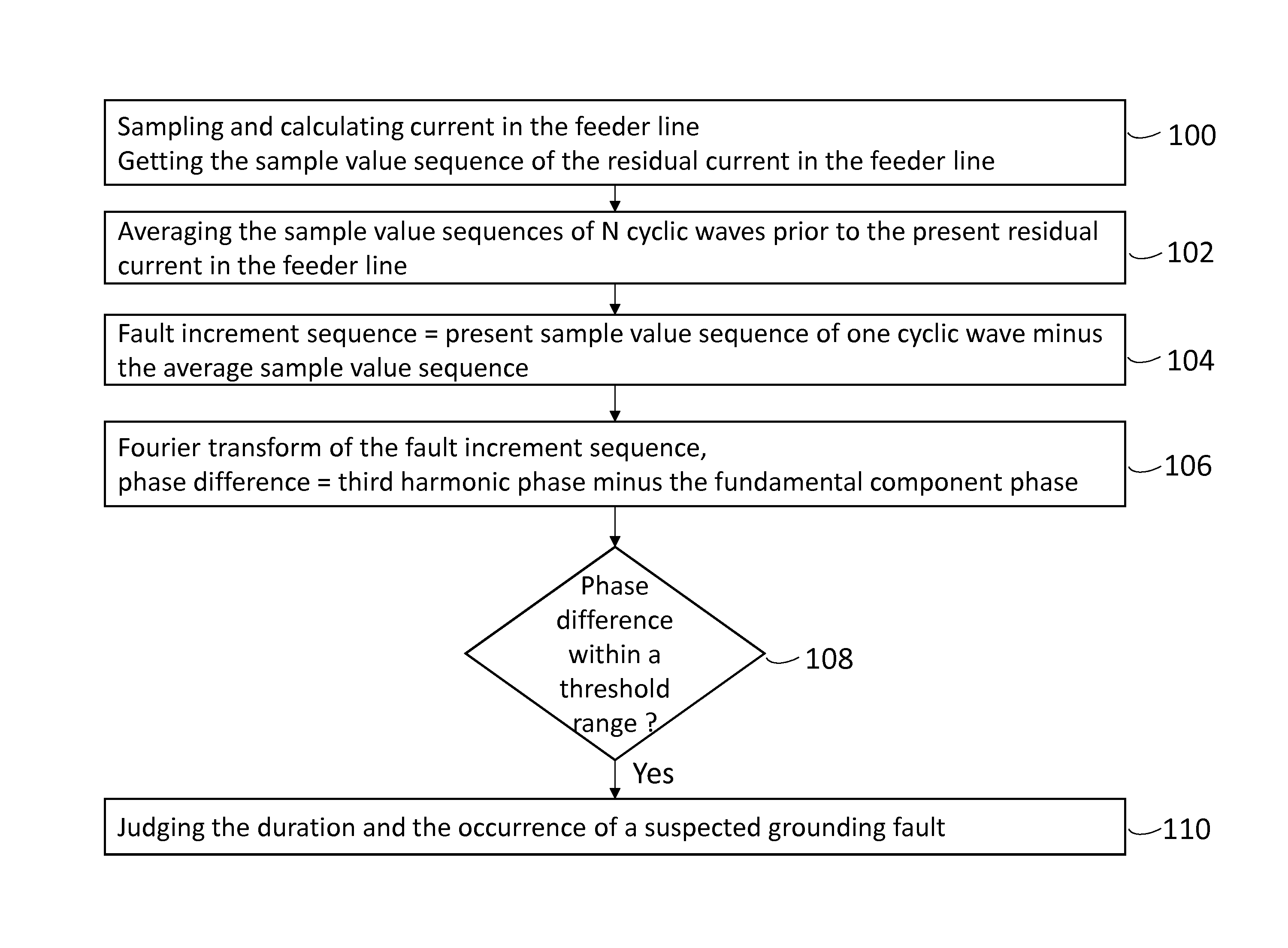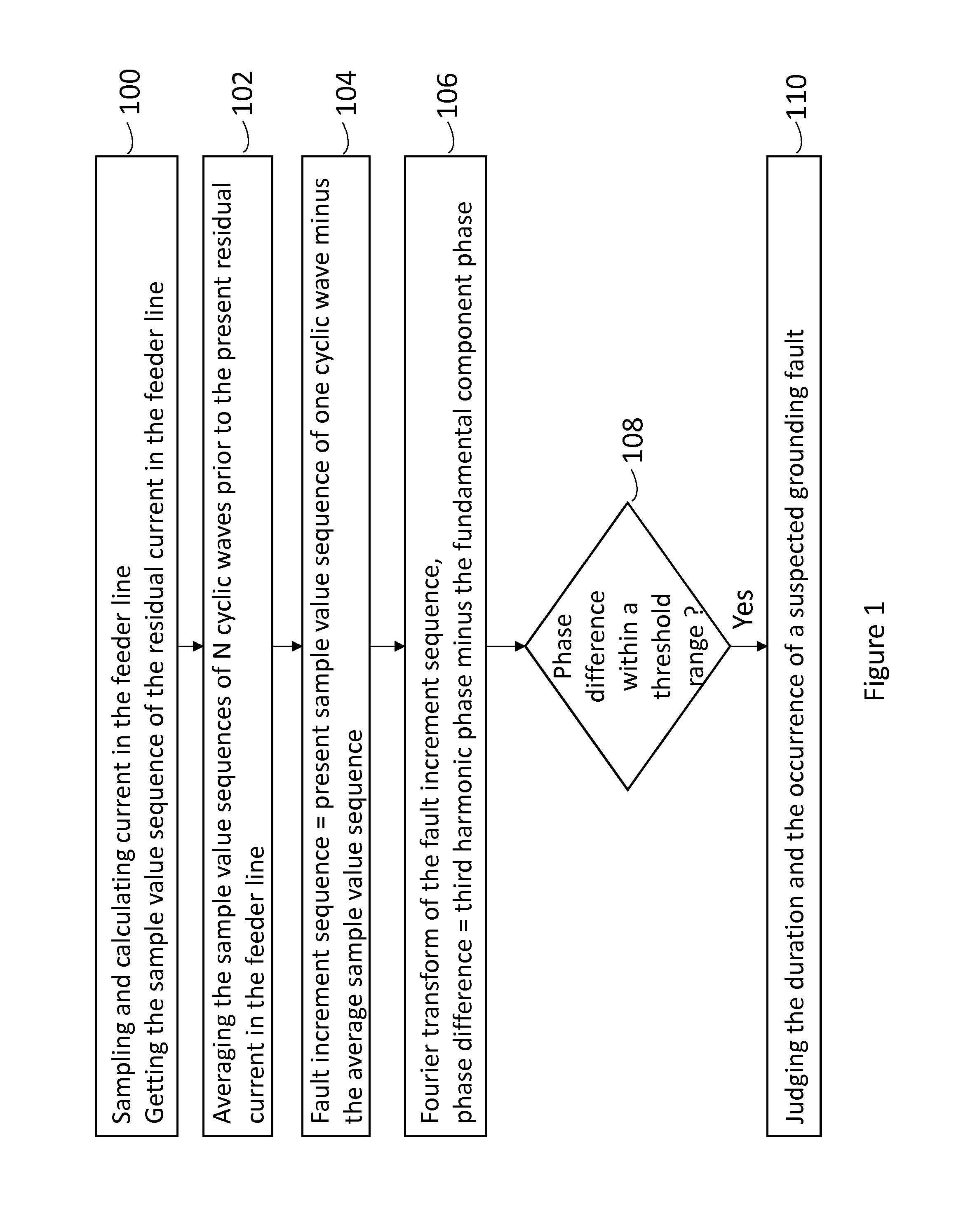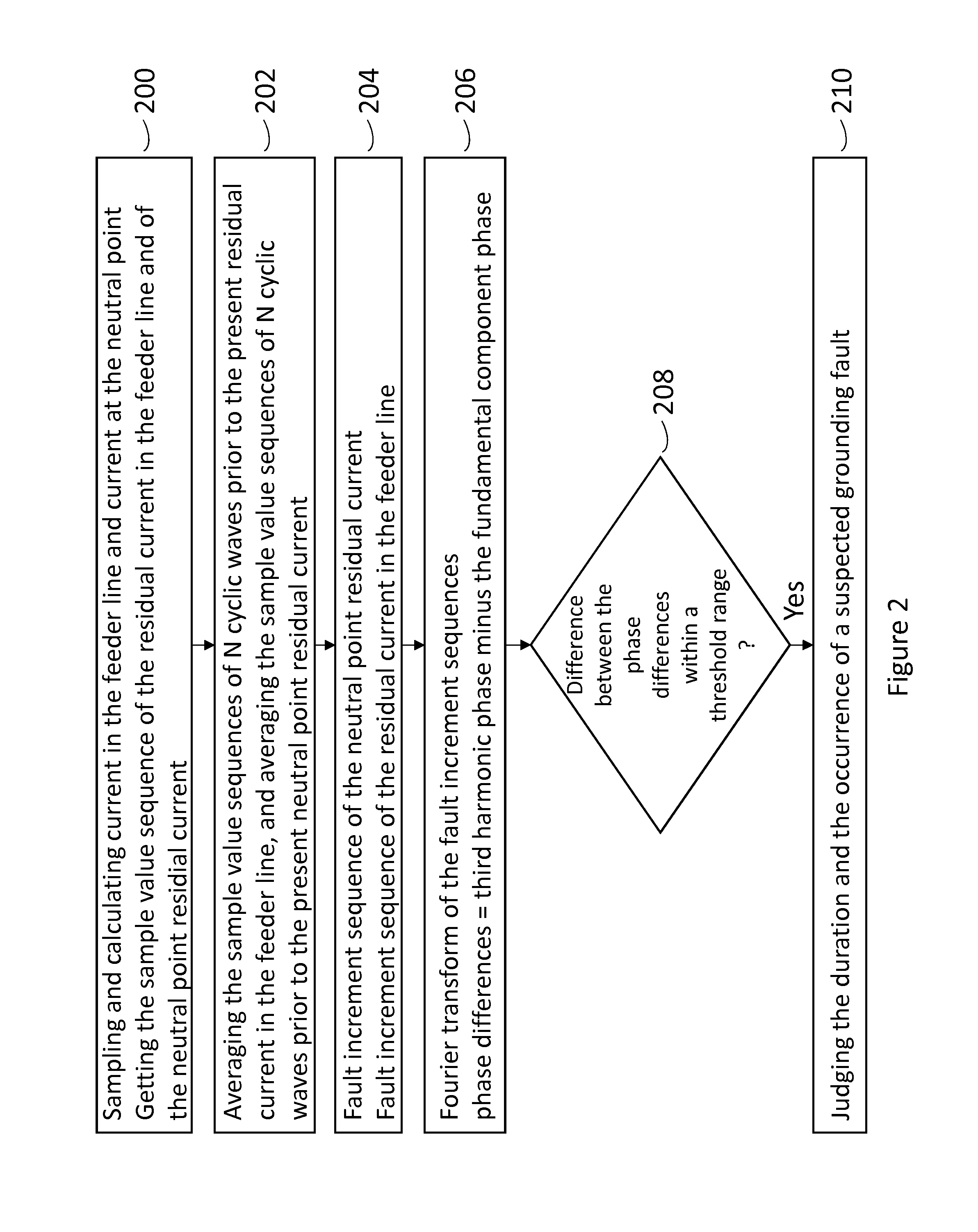Method for detecting single phase grounding fault based on harmonic component of residual current
a single-phase grounding fault and harmonic component technology, applied in short-circuit testing, emergency protective circuit arrangements, instruments, etc., can solve problems such as increased cost and complexity of detection systems, line error detection of grounding faults, and inability to provide voltage signals between outgoing lines of some real systems
- Summary
- Abstract
- Description
- Claims
- Application Information
AI Technical Summary
Benefits of technology
Problems solved by technology
Method used
Image
Examples
embodiment 1
[0034]Embodiment 1 only needs to sample the residual current in the feeder line, without sampling the residual current at the neutral point. The working steps are as follows:
[0035]1) continuously sampling and calculating the current in the feeder line, and getting the sample value sequence of the residual current in the feeder line (achieved with the conventional detecting devices in the feeder line);
[0036]2) averaging the sample value sequences of six cyclic waves prior to the present residual current in the feeder line, to get the average sample value sequence;
[0037]3) getting the fault increment sequence by the present sample value sequence of one cyclic wave minus the average sample value sequence;
[0038]4) calculating the third harmonic amplitude A3 and angular velocity α3 and the fundamental amplitude A1 and angular velocity α1 of the fault increment sequence with Fourier transform, and calculating the phase difference of the third harmonic component relative to the fundamental...
embodiment 2
[0049]The difference distinguishing embodiment 2 from embodiment 1 is to sample and use the residual current at the neutral point. Embodiment 2 determines the fault line according to the result of the phase difference of the residual current at the neutral point minus the phase difference of the residual current in the feeder line. This embodiment requires two conventional detecting devices, wherein one device directly detects the current flowing from the grounding point in the transformer substation into the earth, and the other detects the residual current in the feeder line of the same bus line in the transformer substation. Both detecting devices communicate to each other via the communication network.
[0050]The method of embodiment 2 is similar to the steps of embodiment 1, only adding the treatment of the residual current at the neutral point (treatment steps identical to those of residual current in the feeder line), and judging suspected grounding fault in step 5 according to...
PUM
 Login to View More
Login to View More Abstract
Description
Claims
Application Information
 Login to View More
Login to View More - R&D
- Intellectual Property
- Life Sciences
- Materials
- Tech Scout
- Unparalleled Data Quality
- Higher Quality Content
- 60% Fewer Hallucinations
Browse by: Latest US Patents, China's latest patents, Technical Efficacy Thesaurus, Application Domain, Technology Topic, Popular Technical Reports.
© 2025 PatSnap. All rights reserved.Legal|Privacy policy|Modern Slavery Act Transparency Statement|Sitemap|About US| Contact US: help@patsnap.com



